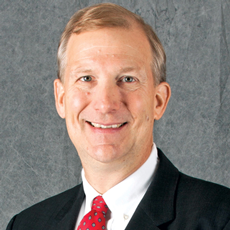
We all have our bad days, or even years, when things don’t go right. The most often-cited reason is probably this: “the system.”
You know: You never had a real chance. A good effort doesn’t get rewarded. You were set up to fail. The rules are bogus. There’s just no way this new plan, company, strategy (pick one) can work with the cards stacked against it from the start.
We hear that the odds were really stacked against Abraham in the Bible, but I’m sure you can go back even farther to some Romans or Greeks to find “the man” holding back the common guy.
So don’t get to feeling too singular when you sense the long-term care blues coming over you. “The man” — in this case Uncle Sam — often does come after you. Usually the reason given is it’s for the greater good. But sometimes credit must be given where credit is due.
That’s one message that Mark Parkinson, the most influential long-term care leader in the U.S. today, was sending earlier this week when he talked to McKnight’s Long-Term Care News Senior Editor Liza Berger. It wasn’t the first time the president and CEO of the American Health Care Association intimated that federal regulators did a pretty good job creating a new payment system for skilled nursing operators.
But it might have been the most emphatic.
The Patient Driven Payment Model has been an industry obsession for about two years, and rightfully so. The Centers for Medicare & Medicaid Services got out in front of this potential mess and successfully educated providers. Either they had earned caregivers’ respect or had scared the daylights out of them. I’m not sure which was the stronger influence. It worked.
What ensued was largely another Y2K. In other words, no end of the world. In fact, with all due respect to some who saw their workloads lightened or even go away, the overall system seems to be working well. At least that’s a presumption from the lack of shrieking we’re hearing.
But the itch to fully evaluate it, even after four months in play, still can’t be scratched, no matter how hard one wants to.
Sure, preliminary numbers look good for many operators, but we have to see what the big players say at their quarterly earnings calls in the coming weeks. That’s not the only indicator, as Parkinson mentioned, but it will be a big one.
Because if Grandma is doing well with solid clinical outcomes but Nursing Home Inc. isn’t doing more than just staying afloat, nothing else matters. The second part of healthcare may be care, but the real first part is “health of the business.” That goes for nonprofit providers as well as for-profits. “No margin, no mission” is the quippy rejoinder often delivered by nonprofits, but there’s a hardened edge to it whenever it’s chirped. All employee families still need to eat.
CMS came at the PDPM challenge head-on. Sure, it changed horses midstream (totally renaming the system in the process), but that turned out to be just one of numerous right decisions. The agency seems to have given providers about as straight of language and instructions as can be expected from such a tentacled body.
Opportunities have blossomed for pro-active providers, and reimbursements have flowed accordingly. Operators have expanded care offerings in many instances. More segments of the LTC workforce are relishing their roles in helping determine their employer’s fate. (Cue the slideshow about how more-engaged workforces are so desirable …)
It’s not a one-size-fits-all approach that suits everyone perfectly, and there will be some payment take backs eventually, most level-headed analyses seem to agree.
But there also has to be agreement that CMS did an awful lot right this time.
Follow Executive Editor James M. Berklan @JimBerklan.




